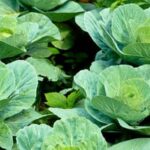Container vegetable gardening is a popular and practical way to grow fresh produce, especially in areas with limited space or challenging climates. In this article, we will explore the unique opportunities and considerations for growing vegetables in containers within a Mediterranean climate. From choosing the right containers to selecting the perfect vegetables, we’ll provide a comprehensive guide to help you thrive in a warm, dry setting.
Container gardening is not only a solution for those with limited space or poor soil quality but also an opportunity to add visual appeal to your outdoor living areas. The Mediterranean climate offers its own set of advantages and challenges for container vegetable gardening, and we will delve into how to create the ideal growing environment for your garden. Whether you are new to gardening or have years of experience, this article will provide valuable insights and tips for success.
By the end of this article, you will have a better understanding of how to nurture and grow your own vegetables in containers within a Mediterranean climate. From soil and fertilizer tips to pest management strategies, we will cover all aspects of maintaining a thriving container garden. So let’s dive into the beauty of container vegetable gardening in a Mediterranean climate and discover how you can enjoy bountiful harvests right outside your door.
Choosing the Right Containers
When it comes to container vegetable gardening in a Mediterranean climate, choosing the right containers is crucial for the success of your garden. The first step is to assess your space and needs to determine the best options for you. Pots, planters, and raised beds are popular choices for container gardening in this type of climate.
For those with limited space, pots and planters are excellent options. They come in a variety of sizes, shapes, and materials, allowing you to choose the best fit for your space and aesthetic preferences. Additionally, pots and planters can be placed on balconies, patios, or even hanging from railings, making them versatile choices for urban dwellers or those with small outdoor areas.
On the other hand, raised beds are ideal for those with more space and a desire to grow a larger quantity of vegetables. Raised beds provide better drainage and soil structure while also reducing the strain of bending over or kneeling during gardening tasks. They are also suitable for growing a wide range of vegetables such as tomatoes, peppers, herbs, and leafy greens – all of which thrive in a Mediterranean climate.
In addition to pots and raised beds, there are other unconventional containers that can be used for vegetable gardening such as window boxes or repurposed items like buckets and barrels. Ultimately, the choice of container will depend on your available space, the types of vegetables you want to grow, and your personal gardening style in a Mediterranean climate.
| Container Options | Pros | Cons |
|---|---|---|
| Pots/Planters | Versatile; suitable for small spaces | May require frequent watering due to limited soil volume |
| Raised Beds | Better drainage; reduced bending or kneeling during gardening tasks | Require more space; may be costlier than pots |
| Unconventional Containers (e.g. window boxes) | Creative options; suitable for urban gardening | May have limited depth for root growth |
Selecting the Perfect Vegetables
When it comes to container vegetable gardening in a Mediterranean climate, selecting the right vegetables is crucial for success. The warm, dry climate of the Mediterranean region presents unique challenges and opportunities when it comes to choosing which vegetables to grow in containers. By focusing on plants that thrive in these conditions, you can ensure a bountiful harvest from your container garden.
Understanding the Mediterranean Climate
Before choosing which vegetables to grow in your container garden, it’s important to understand the characteristics of a Mediterranean climate. This type of climate typically features hot, dry summers and mild, wet winters. Vegetables that are well-suited for this climate are those that can tolerate the heat and have adapted to thrive with minimal water. Understanding the specific nuances of your local Mediterranean climate will help you make informed decisions about which vegetables to plant.
Best Vegetables for Container Gardening in a Mediterranean Climate
Some of the best vegetables for container gardening in a Mediterranean climate include tomatoes, peppers, eggplant, herbs (such as basil, oregano, and thyme), and leafy greens (like lettuce and spinach). These plants are not only well-adapted to hot, dry conditions but also thrive when grown in containers. Additionally, they offer versatility in culinary uses and can be easily incorporated into Mediterranean-inspired dishes.
Tips for Success
When growing vegetables in containers in a Mediterranean climate, it’s essential to provide proper drainage and use a high-quality potting mix that retains moisture while allowing excess water to escape. Regular watering is also crucial, as vegetables grown in containers may dry out more quickly than those grown in the ground.
By choosing the right vegetables and following specific care guidelines tailored to a warm, dry climate, you can create a thriving container vegetable garden that produces an abundant harvest year after year.
Soil and Fertilizer Tips
When it comes to container vegetable gardening in a Mediterranean climate, choosing the right soil and fertilizer is crucial for the success of your garden. The warm, dry conditions characteristic of the Mediterranean climate present unique challenges for growing vegetables in containers. Therefore, it’s essential to create an ideal growing environment by selecting the right soil and providing proper nutrients for your plants.
One of the most important factors to consider when choosing soil for your container garden is drainage. In a Mediterranean climate where the weather can be hot and dry, good drainage is essential to prevent waterlogged soil, which can lead to root rot and other issues. Opt for a high-quality potting mix specifically formulated for containers. These mixes are lightweight, well-draining, and typically enriched with nutrients to support healthy plant growth.
In addition to well-draining soil, it’s important to provide adequate nutrients for your container vegetables. In a Mediterranean climate, the hot and dry conditions can deplete the soil of essential nutrients more quickly than in other climates. Therefore, regular fertilization is key to ensure that your vegetable plants have access to the necessary nutrients for healthy growth and bountiful yields.
| Soil and Fertilizer Tips | Mediterranean Climate |
|---|---|
| Use well-draining potting mix | Avoid waterlogged soil due to hot and dry conditions |
| Regular fertilization required | Nutrients deplete more quickly in hot and dry conditions |
| Consider using organic fertilizers | Supports long-term soil health ensures that your vegetable plants have access vital nutrients |
Watering and Maintenance
In a Mediterranean climate, where hot, dry summers are the norm, watering and maintenance are crucial aspects of container vegetable gardening. To ensure the success of your garden, it is essential to provide proper care and attention to your vegetables.
Here are some tips for watering and maintaining your container vegetable garden in a Mediterranean climate:
- Watering schedule: In a hot, dry climate, it is important to establish a regular watering schedule for your container vegetables. Consider watering early in the morning or late in the afternoon to prevent evaporation. Be sure to water deeply to encourage deep root growth, but avoid overwatering as it can lead to root rot.
- Mulching: Applying a layer of mulch on top of the soil can help retain moisture and regulate soil temperature. Organic mulches such as straw or wood chips can also improve soil structure and fertility over time.
- Fertilization: In addition to regular watering, container vegetables in a Mediterranean climate may benefit from consistent fertilization. Consider using a balanced fertilizer with equal parts nitrogen, phosphorus, and potassium to promote healthy plant growth.
- Pruning and grooming: Regular maintenance tasks such as pruning, grooming, and removing dead or diseased foliage can help keep your container garden healthy and productive. This can also help improve air circulation around the plants, reducing the risk of fungal diseases.
By incorporating these watering and maintenance practices into your routine, you can ensure that your container vegetable garden thrives in a Mediterranean climate. With proper care and attention, you can enjoy a bountiful harvest of fresh and delicious veggies throughout the growing season.
Sun and Shade
When it comes to container vegetable gardening in a Mediterranean climate, maximizing sunlight and providing necessary shade are essential factors to consider. The warm, dry weather of the Mediterranean can be both advantageous and challenging for growing vegetables in containers. Proper placement and protection from extreme heat are crucial for the success of your container garden.
Here are some tips for maximizing sunlight and providing necessary shade for your container garden in a Mediterranean climate:
- Position your containers strategically: Place your containers in an area that receives at least 6-8 hours of sunlight per day. Choose a spot that is sheltered from strong winds, but still allows for ample sunlight exposure.
- Utilize shade cloth: In the peak of summer, when temperatures soar, use shade cloth to protect your vegetables from scorching heat. Shade cloth can help diffuse intense sunlight and reduce the risk of sunburn on your plants.
- Rotate your containers: Throughout the day, the position of the sun changes. To ensure all sides of your containers receive adequate sunlight, rotate them periodically to promote even growth and minimize shading.
In a Mediterranean climate, where high temperatures and intense sunlight are common, it’s important to strike a balance between maximizing sunlight for plant growth and providing necessary shade to prevent heat stress. By carefully considering sun exposure and implementing strategies for shading, you can optimize the growing conditions for your container vegetable garden.
Pests and Diseases
Identifying Common Pests and Diseases
In a Mediterranean climate, there are several pests and diseases that can pose a threat to your container vegetable garden. Some common pests include aphids, whiteflies, and spider mites, while diseases such as powdery mildew and blossom end rot can also affect your plants. It’s important to be able to identify the signs of pest infestations and diseases early on so that you can take action to protect your vegetables.
Natural Pest Control Methods
One effective method for controlling pests in a container vegetable garden is introducing beneficial insects such as ladybugs or lacewings. These natural predators can help keep pest populations in check without the use of harmful chemicals. Additionally, companion planting certain herbs and flowers like marigolds or basil can act as natural repellents for common pests. For diseases, using proper watering techniques and avoiding overhead watering can help prevent the spread of fungal infections.
Organic Solutions for Disease Management
If faced with a disease outbreak in your container garden, it’s important to have organic solutions on hand for managing the issue. Neem oil is a popular choice for controlling both pests and diseases, as it has antifungal and insecticidal properties.
For powdery mildew specifically, a mixture of baking soda and water sprayed onto the affected plants can help reduce the spread of the fungus. By incorporating these organic methods into your gardening practices, you can effectively protect your vegetables from common threats in a Mediterranean climate without resorting to harsh chemical treatments.
Harvesting and Enjoying Your Bountiful Container Garden
In conclusion, container vegetable gardening in a Mediterranean climate offers a unique and rewarding experience for both novice and experienced gardeners. The ability to grow your own fresh produce in a limited space is not only practical but also environmentally friendly. By utilizing the tips and guidelines provided in this article, you can create a thriving container garden that yields an abundant harvest of delicious vegetables, even in the warm, dry conditions of a Mediterranean climate.
One of the key benefits of container gardening in a Mediterranean climate is the ability to control the growing environment for your vegetables. With the right containers, soil, fertilizer, and watering techniques, you can create an ideal habitat that promotes healthy growth and high yields. Additionally, by carefully selecting vegetables that thrive in warm, dry climates, you can ensure a successful harvest season.
It’s important to remember that despite the challenges of pests and diseases in a Mediterranean climate, with proper care and attention, your container garden can flourish. By proactively protecting your vegetables from common threats and providing necessary shade when needed, you can minimize the risk of damage to your plants.
Ultimately, with dedication and patience, you will be able to enjoy the fruits of your labor as you harvest fresh produce from your bountiful container garden in a Mediterranean climate.
Frequently Asked Questions
What Vegetables Grow in the Mediterranean?
The Mediterranean region is known for growing a variety of vegetables such as tomatoes, eggplants, zucchinis, peppers, artichokes, and leafy greens like spinach and kale. These vegetables thrive in the warm, dry summers and mild, wet winters of the Mediterranean climate.
Is It Easy to Grow Crops in a Mediterranean Climate?
Growing crops in a Mediterranean climate can be both easy and challenging. While the long, hot summers provide ideal conditions for many types of plants to flourish, the dryness and lack of water during the summer months can make it difficult to sustain certain crops without irrigation.
Additionally, the soil quality and elevation can also impact crop growth in this type of climate.
What Type of Vegetation Grows in the Mediterranean Climate?
The vegetation in a Mediterranean climate consists of a diverse range of plants including evergreen trees like olive trees and cypress trees, shrubs such as lavender and rosemary, as well as drought-resistant plants like succulents and cacti. These types of vegetation have adapted to survive in the dry summer conditions and mild, rainy winters characteristic of the Mediterranean climate.

If you’re looking to get into vegetable gardening, or are just looking for some tips on how to make your current garden better, then you’ve come to the right place! My name is Ethel and I have been gardening for years. In this blog, I’m going to share with you some of my best tips on how to create a successful vegetable garden.





